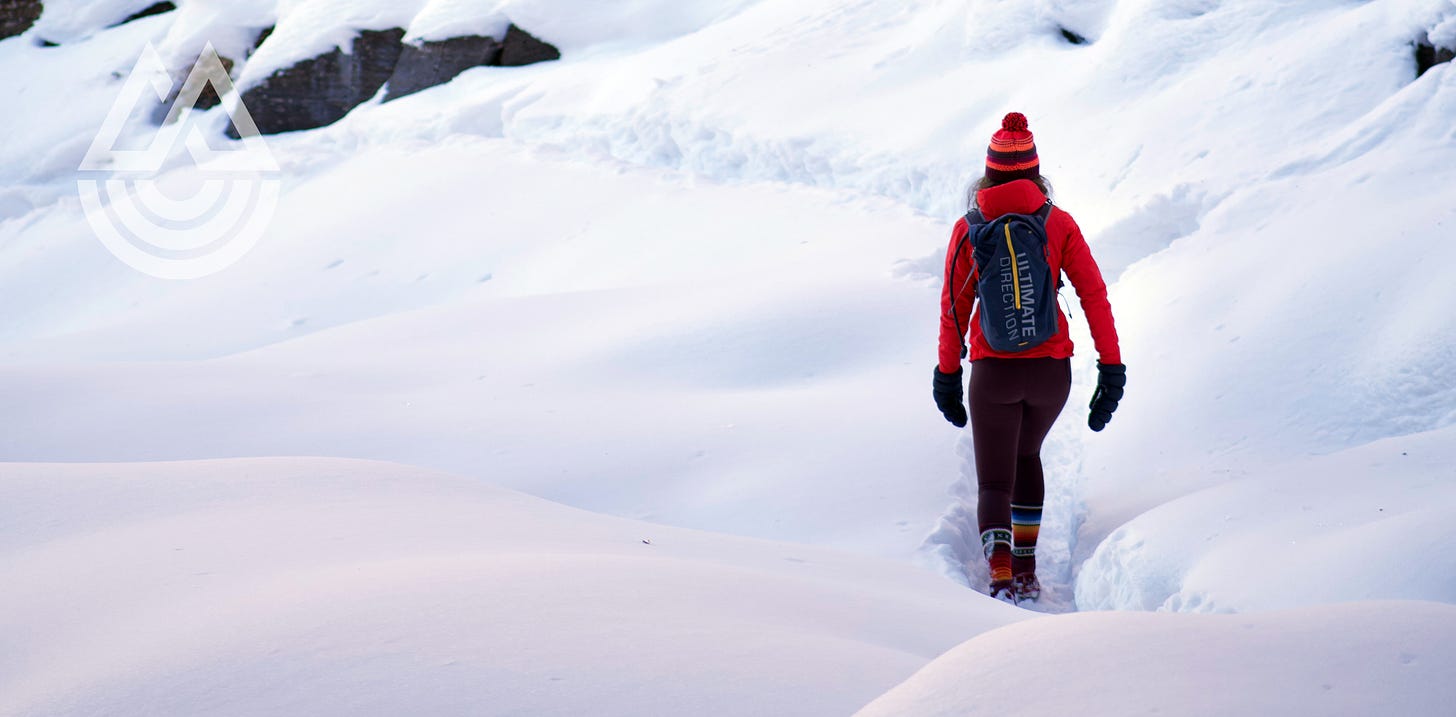Getting started with winter hiking, part 1
How to layer and what to wear for comfortable winter hiking
I used to dread winter. The cold, dark days; the lack of sun; and so much time inside. I’d go stir-crazy first, then Seasonal Affective Disorder would bum me out until the first signs of Spring. After moving to Utah 11 years ago, I committed to “Project Love Winter,” forcing myself to figure out how to embrace the season. Turns out all I needed was some good winter gear and time in nature.
Now I LOVE winter. The snow makes all my summer hiking trails feel sparkling and magical, my gear gets me comfortably outside on sunny or snowy days, and the project helps me stay active during what used to be a period of Netflix and naps. However, it took me a while to figure out what to buy and how to layer so I wasn’t cold, wet, or bulked up like the Stay Puft Marshmallow Man.
I’m republishing this guide because after what we’ve all been through in the last three years… we need to get outside. Consumer prices are rising, many are still struggling financially and energetically in this pandemic, yet experts say we’re going to spend 7-9% more this holiday season than last year. Maybe it’s time to join me and REI in a new holiday tradition—using your Black Friday to opt outside for a solo, friend, or family adventure. If that sounds like a literal breath of fresh air, let’s figure out how to get you out there comfortably.
In this article, I’ll dress you head-to-toe, helping you decide how to layer and linking the specific products and brands that I’ve been using for years.
Note: I’ve invested in my winter gear because I’m hiking, snowshoeing, or cross-country skiing regularly, in all kinds of conditions and temperatures ranging from -10°F to a balmy 40°F. But you don’t need to break the bank to explore your local trails, parks, or nature preserves in winter. Scour the online sales, pick up last season’s colors or model at a discount, try it on at your local store then find it used from Poshmark, borrow what you only occasionally need, and add to your collection gradually as your budget allows.




